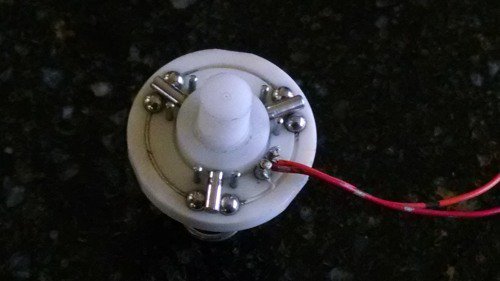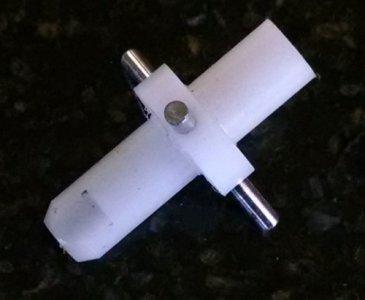Don't you set the DRO zero to an offset of the radius of the wiggler/edge finder?The easiest thing to do is use a wiggler/edge-finder then reset the DRO to zero. A little practice and you will not want anything else. Done it for years.
Ken
Don't you set the DRO zero to an offset of the radius of the wiggler/edge finder?The easiest thing to do is use a wiggler/edge-finder then reset the DRO to zero. A little practice and you will not want anything else. Done it for years.


Take a look at the white papers on the Tormach site regarding their TTS system. It uses a combination of pre-mounted tools and a tool offset measurement system using a height gage. My reference "tool" is a digital dial indicator which is zeroed in my work datum and then is used to zero the height gage. All subsequent tools are referenced to the height gage and the offsets entered into my tool offset table. The principles involved can be used with other measurement systems with a little thought.On the height setting issue I think all them CNC types have have tool changers set to a specific depth. If you did the quill touch off with a probe then swaped out the probe for an end mill or drill bit , how do you then know you have that at the correct height ? you would end up having to measure the tools in each time.
if your buying measuring stuff with batteries the mititoyo stuff has legendary battery life.
Stuart
=FWIW, I got the full TTS system when I got my mill and would give up a lot of other tools before I would part with it. I also modified my old mill drill to use TTS. All it entailed in that case was grind the face of a 3/4" R8 collet for clearance. I have fifteen or twenty of their ER20 Adapters along with a full set of collets and multiples of the 1/8", 3/16", 1/4", 5/16", 3/8", and 1/2" collets which gives me the ability to pre-mount and zero all the tools that I will need for a job. Tormach has a n app note on setting a mill up to use their TTS system.
Wreck-wreckNot intended to offend in any way, but there are many inexpensive methods of determining position on a manual mill, if your goal is to make parts as fast as possible then by all means have at it. If on the other hand ones goal is to make reasonably nice parts as a hobby and your budget for tooling is limited then buying the best tools that you are willing to pay for will be more useful then a "Probe"
On your second point, yes it is entirely possible to probe a 3D solid with a DRO, however this would be extremely time consuming in practice, this is what a Coordinate Measuring Machine or CMM does by design.
Wreck-wreck
Question: if I was only dealing with a part where beside des the thickness of the stock I was dealing primarily with x,y sub datum, such as hole placement and diameter, and perhaps a section of the piece that is to be machined out. What is the difference between using a modern DRO that has the features to "map" it out, and a CMM?
